Nestled in the heart of Ventura County, the city of Thousand Oaks stands as one of California’s most remarkable success stories of planned community development. This comprehensive exploration of the history of Thousand Oaks reveals how a once-rural valley inhabited by the Chumash people transformed into a thriving city of over 127,000 residents while maintaining its natural beauty and small-town charm.
From ancient Native American settlements to Spanish land grants, from pioneering families to Hollywood’s golden age, and from agricultural roots to excellence, Thousand Oaks exemplifies thoughtful urban planning that honors both heritage and progress. This article is worth reading because it uncovers the fascinating layers of development that created one of California’s most desirable places to live, work, and visit.
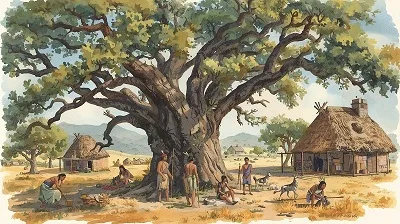
The Ancient Roots: Native American Heritage in Thousand Oaks
The history of Thousand Oaks begins thousands of years before European exploration, when the Chumash people established thriving communities. These sophisticated Native Americans developed complex societies centered around the abundant oak tree groves that would eventually give the city its name. The Chumash understood the valley’s natural rhythms, creating sustainable communities that lived in harmony with the environment.
Archaeological evidence found throughout Thousand Oaks reveals extensive trade networks and cultural practices that flourished in this region. The Chumash left behind cave paintings, artifacts, and sacred sites that can still be visited today. Their deep connection to the land and respect for the oak tree forests established a foundation of environmental stewardship that continues to influence Thousand Oaks’ development philosophy. The Conejo Valley provided everything these early inhabitants needed: fresh water, abundant wildlife, and the acorns from oak trees that served as a dietary staple.
Spanish Colonial Era: Land Grants and Mission Influence
When Spanish explorer Juan Rodriguez Cabrillo claimed the region for Spain in 1542, he set in motion centuries of cultural transformation in what would become Thousand Oaks. The Spanish colonial period brought significant changes to the Conejo Valley, including the establishment of Mission San Buenaventura in nearby Ventura, which extended its influence.
During the early 1800s, Spanish governors granted 48,671 acres of land grant territory to loyal soldiers, encompassing much of the present-day city of Thousand Oaks. These vast ranchos introduced cattle ranching and fundamentally altered the landscape. The Spanish colonial system established large estates that would influence property patterns for generations. The legacy of this period remains visible today in street names, architectural styles, and the preservation of historical sites throughout Thousand Oaks.
Mexican Rancho Period: Agricultural Foundations
Following Mexico’s independence from Spain in 1821, the Conejo Valley entered the Mexican rancho period, which significantly shaped the future development of Thousand Oaks. Large cattle ranches dominated the landscape, with families like the Olivas establishing extensive operations that stretched across thousands of acres. This era saw the development of the region’s first substantial agricultural economy.
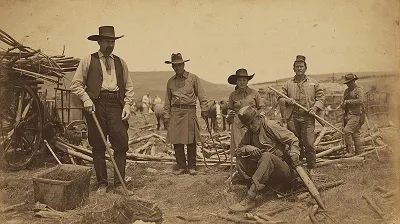
The Mexican period introduced new architectural styles, agricultural techniques, and cultural traditions that blended Spanish, Mexican, and Native American influences. Rancho life centered around large haciendas that served as community hubs, hosting celebrations and serving as centers of commerce. The open space and rural character established during this time became integral to Thousand Oaks’ identity, influencing modern city planning that prioritizes preserving natural landscapes alongside development.
American Pioneer Era: Building Community Infrastructure
The American acquisition of California in 1848 brought waves of pioneers to the Conejo Valley, laying the groundwork for what would become the city of Thousand Oaks. Egbert Starr Newbury established the area’s first post office in 1875, creating Newbury Park and connecting the remote valley to the growing network of California cities. His small tent post office became a crucial link along the stagecoach route between Los Angeles and San Francisco.
Pioneer families like the Borchard, Olsen, and Pederson families purchased land and established farms that transformed Thousand Oaks from open rangeland into productive agricultural territory. These immigrant families, many arriving from Germany and Norway, brought diverse agricultural knowledge and strong work ethics. The Pederson family’s eventual donation of 130 acres to California Lutheran College in 1957 demonstrates the long-term community vision these early settlers possessed. Their contributions established the foundation for shopping centers, schools, and civic institutions that would support future growth.
The Janss Family Vision: Planning the Modern City
The most transformative period in the history of Thousand Oaks began in 1911 when the Janss family purchased 10,000 acres in the Conejo Valley. Peter Janss and his family envisioned creating a “total community” that would balance residential, commercial, and recreational needs while preserving the area’s natural beauty. The Janss Investment Corporation became the primary developer of modern Thousand Oaks, establishing planning principles that continue to guide city development today.

The family’s approach was revolutionary for its time, emphasizing the integration of open space with suburban development. They developed the first shopping centers, including what became the Oaks Mall, and created residential neighborhoods that preserved mature oak tree stands. The Janss family home, now a California historical landmark, represents their commitment to quality development that respected the landscape. Their vision established Thousand Oaks as a model for planning that other California cities would later emulate.
Hollywood Comes to Thousand Oaks
The entertainment industry discovered the scenic beauty of Thousand Oaks in the 1920s, bringing national attention. Louis Goebel’s Lion Farm, established in 1927 near what is now the Thousand Oaks Civic Arts Plaza, became a major tourist attraction and supplied trained animals for Hollywood productions. The facility later expanded into Jungleland, drawing thousands of visitors to experience exotic animal performances.
Major Hollywood productions were filmed in Thousand Oaks, including scenes from “Birth of a Nation,” “Tarzan” movies, and “The Adventures of Robin Hood.” This connection to the entertainment industry brought economic benefits and national recognition to the area. The legacy continues today, with numerous productions still filmed. The Civic Arts Plaza now serves as a premier venue for Broadway touring companies and cultural events, maintaining the city’s connection to the performing arts.
Post-War sub urbanization and Growth
The period following World War II marked explosive growth for Thousand Oaks as returning veterans and their families sought homes west of Los Angeles. The development of the Ventura Freeway improved access between Los Angeles County and Ventura County, making Thousand Oaks an attractive option for commuters working in the greater Los Angeles area. By 1961, the community featured two shopping centers, an industrial park, schools, churches, and California Lutheran University.
This expansion transformed Thousand Oaks from a rural farming community into a modern residential destination. The aerospace industry boom in Southern California brought educated professionals to the area, creating demand for quality housing and community amenities. Developers built neighborhoods that preserved mature oak tree groves and maintained the area’s rural character, establishing the template for the city’s later growth. The presence of California Lutheran University added educational and cultural depth to the community, attracting families who valued educational opportunities.
City Incorporation: The Birth of Modern Thousand Oaks
On September 29, 1964, residents voted to incorporate as the city of Thousand Oaks, choosing a name that honored the abundant oak tree groves. The newly incorporated city encompassed 14.28 square miles and served nearly 20,000 residents. This milestone marked the beginning of formal city planning and municipal services that would guide Thousand Oaks’ continued development.
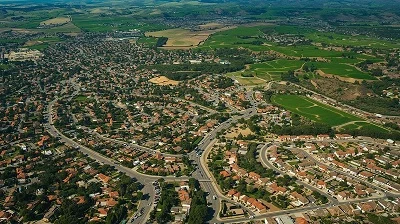
Early city leadership established principles of controlled growth that balanced development with preservation of open space. The Thousand Oaks City Council implemented zoning regulations that maintained character while allowing for commercial and industrial development. City incorporation enabled the community to establish its own police department, fire department provides emergency response, and other municipal services. The city’s commitment to preserving natural areas was evident from the beginning, with early ordinances protecting oak tree groves and hillside areas.
Cultural and Educational Development
The establishment of cultural institutions has been central to the identity of Thousand Oaks throughout its development. California Lutheran University serves as an anchor institution, providing educational opportunities and cultural programming for the broader community. The university’s presence attracted faculty, staff, and students who contributed to the city’s intellectual and cultural life.

The construction of the Thousand Oaks Civic Arts Plaza in the 1990s created a world-class venue for performing arts, hosting Broadway touring productions, concerts, and community events. The Conejo Valley Art Museum showcases local and regional artists, while the Thousand Oaks Community Art Gallery provides exhibition space for emerging talent. The Thousand Oaks Library System has earned recognition as one of the best public libraries in California, offering extensive collections and programming. These cultural amenities distinguish Thousand Oaks from other communities and contribute to its reputation as a desirable place to live.
Economic Evolution and Modern Industry
The economic transformation of Thousand Oaks reflects the broader evolution of California’s economy from agriculture to technology and services. While farming dominated Thousand Oaks until the 1950s, the city has since developed a diverse economic base centered on biotechnology, healthcare, and professional services. Companies based in Thousand Oaks include major pharmaceutical firms, medical device manufacturers, and technology companies.
Los Robles Hospital serves as a major employer and provides medical services for Thousand Oaks and the broader Ventura County region. The proximity to Los Angeles International Airport and major freeways makes Thousand Oaks attractive to businesses requiring transportation access. Industry in Thousand Oaks benefits from the highly educated workforce attracted by the city’s quality of life and educational institutions. The city’s economic development strategy emphasizes attracting clean, high-paying industries that complement the residential character.
Transportation and Infrastructure
Transportation infrastructure has been crucial to the development of Thousand Oaks as a major city in Ventura County. The Ventura Freeway (US-101) connects Thousand Oaks to Los Angeles and Santa Barbara, making it accessible to employment centers throughout Southern California. Thousand Oaks Boulevard serves as the main east-west arterial, connecting residential areas to shopping centers and business districts.
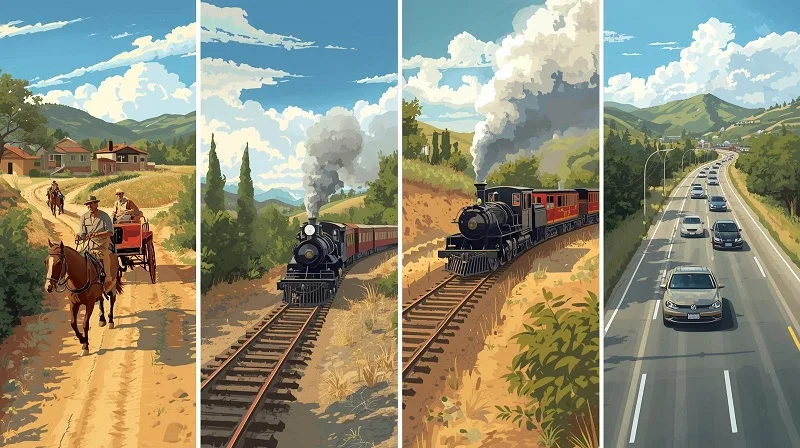
Thousand Oaks offers public transportation through Thousand Oaks Transit, providing local bus service and connections to regional transit systems. Shuttle lines to Los Angeles serve commuters working in Los Angeles County, while connections to Ventura County’s transit network link Thousand Oaks and Newbury Park to other communities. The city’s location halfway between Los Angeles and Santa Barbara positions it as an important transportation hub for northwestern Ventura County.
Sports and Recreation Legacy
Thousand Oaks is home to several professional sports connections that have brought national attention to the city. The Los Angeles Rams conduct training camp facilities in Thousand Oaks, and both the Los Angeles Rams and Dallas Cowboys have historical connections to the area. The Conejo Oaks semi-pro baseball team represents local athletic tradition.
Recreation facilities throughout Thousand Oaks include Los Robles Greens Golf Course and extensive park systems that take advantage of the city’s natural setting. The abundance of open space provides residents with hiking trails, sports fields, and natural areas for outdoor recreation. Youth sports programs and community athletics contribute to the family-friendly character that attracts residents to Thousand Oaks.
Environmental Stewardship and Natural Heritage
Environmental preservation has been a defining characteristic of Thousand Oaks since incorporation. The city has designated over 15,000 acres as open space, creating an extensive network of trails and natural areas that preserve the landscape’s original character. This commitment to environmental stewardship reflects the influence of early residents who valued the natural beauty of the Conejo Valley.
Native wildlife including California quail and California kingsnakes continue to thrive in preserved habitats throughout Thousand Oaks. The city’s environmental policies protect oak tree groves, maintain natural watersheds, and promote sustainable development practices. Fire stations were built strategically to protect both developed areas and natural spaces from wildfire threats. The integration of open space with development creates the unique character that defines modern Thousand Oaks.
Contemporary Thousand Oaks: A Model City
Today, Thousand Oaks stands as one of California’s most successful examples of planned community development. The city has grown to encompass 56 square miles while maintaining the character and natural beauty that attracted early residents. Central Thousand Oaks features a thriving downtown area with shopping, dining, and entertainment options, while residential neighborhoods preserve the park-like setting that defines the community.
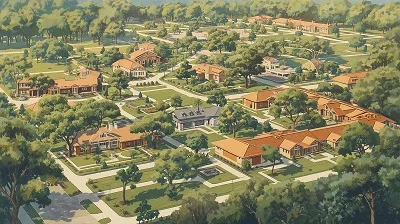
The coastal city benefits from its Mediterranean climate and strategic location in Ventura County. Educational excellence continues through Thousand Oaks High School and other top-rated schools, while California Lutheran University provides higher education opportunities. The city’s success in balancing growth with preservation serves as a model for other California communities facing similar development pressures.
Regional Connections and Modern Recognition
Thousand Oaks’ strategic position has made it a focal point for regional development and recognition. When Alta California became part of the United States in 1848, the area that would become Thousand Oaks found itself perfectly positioned along crucial transportation corridors. The Los Angeles Times has frequently featured the city in articles highlighting its quality of life and economic development, particularly noting its location 40 miles west of Los Angeles. The scenic route from Thousand Oaks to Santa Rosa Valley showcases the natural beauty that attracted early settlers and continues to draw visitors today.
The drive from oaks to Santa Rosa valley reveals the diverse landscape that makes this region unique, while the corridor connecting Los Angeles and Ventura runs directly through Thousand Oaks, cementing its role as a regional hub. The Thousand Oaks Police Department serves as a model law enforcement agency for similar-sized communities throughout California. Wildlife native to Thousand Oaks includes diverse species that have adapted to the environment, while the area has also been home to sports teams like the Los Angeles Lightning, demonstrating the city’s connections to broader Southern California athletic and cultural networks.
Key Takeaways: The Thousand Oaks Success Story
• Native American Foundation: The Chumash people established sustainable communities in the Conejo Valley for thousands of years, creating a foundation of environmental respect
• Spanish and Mexican Legacy: Land grants and rancho culture established large-scale agriculture and influenced property patterns that persist today
• Visionary Planning: The Janss family’s “total community” concept revolutionized development by integrating residential, commercial, and natural areas
• Hollywood Connection: Entertainment industry ties brought national recognition and continue to contribute to the local economy
• Strategic Incorporation: The 1964 incorporation as the city of Thousand Oaks enabled controlled growth and preservation of community character
• Educational Excellence: California Lutheran University and top-rated public schools attract families and contribute to community quality
• Economic Diversification: Evolution from agriculture to biotechnology and professional services created a stable, high-wage economy
• Environmental Commitment: Over 15,000 acres of preserved open space maintain the natural beauty that defines Thousand Oaks
• Cultural Investment: The Thousand Oaks Civic Arts Plaza and library system provide world-class amenities typically found in much larger cities•
• Transportation Access: Strategic location and freeway connections make Thousand Oaks accessible while maintaining tranquility
